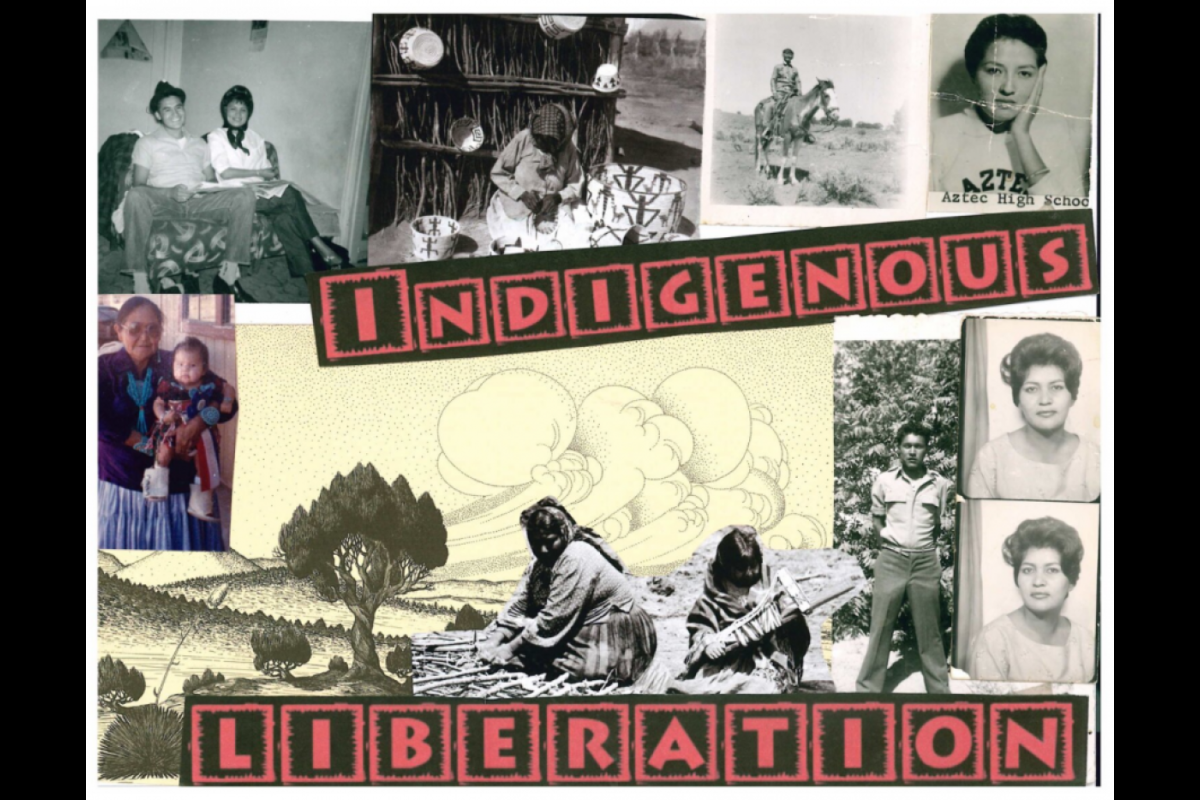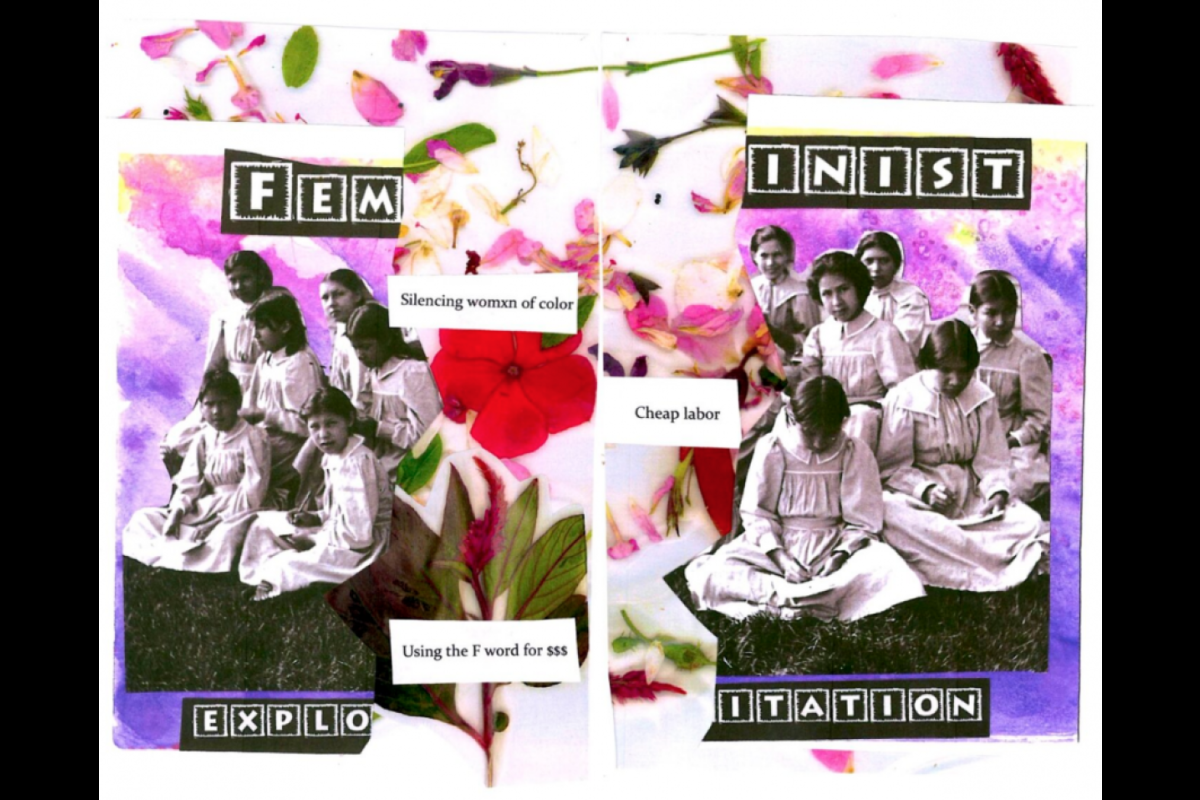Small rebellions: ASU Zine Collection shines light on creative activism

Freedom is a word that comes to mind when describing the unmediated self-publishing space of zines, short for “fanzines” or “magazines,” a creative space that Rachel Leket-Mor, an associate librarian at Arizona State University, discovered for herself about a decade ago.
“I first came to know zines (pronounced ‘zeens’) through the IsraPulp Collection and figured out quickly that these materials are different,” Leket-Mor said. “Once I realized there are zines in the world, I began looking for them.”
Leket-Mor, the open stack collections curator for the ASU Library, is the creator of the ASU Zine Collection, now available at Hayden Library, where community members are invited to explore unique, unfiltered voices – many of them from Arizona – in print form.
“Zines come in many shapes and forms,” Leket-Mor said. “They may be hand-pressed or digitally born, prepared in cut-and-paste technique or hand-drawn, printed in color or produced in black and white, created by one person or put together by a group. Whatever DIY form they take, zines uphold free spirit and an ethos of anti-corporate publishing. They claim space for expressing artistic freedom, authentic personal pain or pure 'joie de vivre'.”
Rachel Leket-Mor
Pamphlet-like, zines tend to have small print runs, somewhere between one and 500 copies, and are produced often by just one individual out of a desire to share personal knowledge or experiences.
Some titles from the ASU collection include: “Empower Yoself Before You Wreck Yoself: Native American Feminist Musings” and “Fracking Can Be Fun.”
Arizona zines, in particular, were the focus of a 2020 research cluster supported by the Institute for Humanities Research (IHR) and co-led by Leket-Mor and Ron Broglio, a professor in the Department of English.
“Zines come from a long line of self-published protest works, dating back to pamphlet versions of Thomas Paine’s ‘Common Sense’ to fuel the American revolution against British rule and on to 1960s protest lit, and then into the counterculture punk movement of the '70s and '80s,” said Broglio, co-director of IHR and director of the Desert Humanities Initiative. “In times when the world feels beyond our control, writing and making zines provide people an outlet, a voice and solidarity through community.”
Years in the making, the ASU Zine Collection is the result of Leket-Mor’s growing connections with a community of scholars and practitioners at ASU and beyond who are interested in zines, zine-making and the radical work of small press publications.
These connections, and the communities they bring together, will be celebrated April 2–3 at the inaugural ASU Zine Fest, a virtual gathering of makers, collectors, students, scholars and anyone interested in zines and zine culture, hosted by the ASU Library and IHR.
During two days of presentations, attendees are invited to explore “Making on the Margins” and “DIY Voices of the Community,” covering topics like queerness, chronic illness, punk poetry and feminism.
Video by ASU Library
Charissa Lucille, owner of Wasted Ink Zine Distro, a zine library and Phoenix storefront that serves as a kind of headquarters for Arizona zinesters, will talk about how “failing, losing, unmaking and not knowing” are the keys to finding creative freedom in the world of self-publishing. The keynote presentation, “Margins: Writing as Magic-Making, Self-Publishing as a Literary Tradition,” will be given by Ariel Gore, founding editor and publisher of “Hip Mama.”
ASU alum Amber McCrary, local writer and founder of Abalone Mountain Press, a publishing space for Indigenous writers, will lead a presentation on Indigenous zines and zine-making.
“Zines were my foundation on discovering my voice and discovering a world of people that embraced everything that was considered too nerdy or too weird in my small town,” McCrary said. “Once I started making zines and seeing the reaction, it helped me communicate thoughts I always would think of but never felt brave enough to put onto paper.”
McCrary will co-present with Alex Soto, an assistant librarian, who leads the activities of the Labriola National American Indian Data Center at the ASU Library. Together, they regularly develop and deliver workshops on writing, creativity and zine-making for students and the ASU and greater Phoenix Indigenous community.
“The work Amber is doing highlights how Indigenous peoples have ‘indigenized’ Western mediums in order to convey contemporary Indigneous existence,” Soto said. “As an Indigenous librarian, I feel it is crucial to share her work with the ASU community since it shows the range of our Indigeneity. The Labriola Center has partnered with Amber on multiple occasions to provide zine workshops for students. In these collaborations, we witnessed the need to further create space for zine culture within the library. Building on Rachel Leket-Mor’s efforts, the Labriola Center is working towards a zine section within our collection.”
About 50 zines are ready to explore in the collection display at Hayden Library, with many more in processing to become available soon.
Rare primary-source materials, zines can serve as helpful tools for research and teaching, said Leket-Mor, who helped several faculty members incorporate zines into their course curriculum. Recent examples include assistant professor Heather Green's fall 2021 class "Art Zines: Self-Publishing, Protest & Change" in the School of Art and the spring 2020 class "Making Zines for Social and Environmental Issues," co-taught by Broglio and Jeffrey Cohen, dean of humanities for The College of Liberal Arts and Sciences.
"Creative writing and art programs may be more receptive to zines, but thanks to their wide-ranging topics and vibrancy, especially when authored by peers, zines can inspire students in all disciplines from education to sustainability to science," Leket-Mor said.
Zine making as a therapeutic approach is springing up in new environments as well — in health care settings and high schools — where the opportunity to express ideas and creativity with a piece of paper, scissors and glue, rather than through a technology device, is bringing about positive outcomes for zine creators.
The final presentation of Zine Fest will look at the zine-based resurrection of a radical feminist newspaper, “The Revolution,” revered in its day in 1868–1872.
Today's editorial team of The Revolution (Relaunch) will explore why they believe social justice is a more creative pursuit than a polemical one – and why creative activism is more important than ever.
Top image: A collage of zine elements by ASU alumna Amber McCrary, zine maker and founder of Abalone Mountain Press, a publishing space for Indigenous writers.
More Arts, humanities and education

ASU professor's project helps students learn complex topics
One of Arizona State University’s top professors is using her signature research project to improve how college students learn science, technology, engineering, math and medicine.Micki Chi, who is a…

Award-winning playwright shares her scriptwriting process with ASU students
Actions speak louder than words. That’s why award-winning playwright Y York is workshopping her latest play, "Becoming Awesome," with actors at Arizona State University this week. “I want…

Exceeding great expectations in downtown Mesa
Anyone visiting downtown Mesa over the past couple of years has a lot to rave about: The bevy of restaurants, unique local shops, entertainment venues and inviting spaces that beg for attention from…





